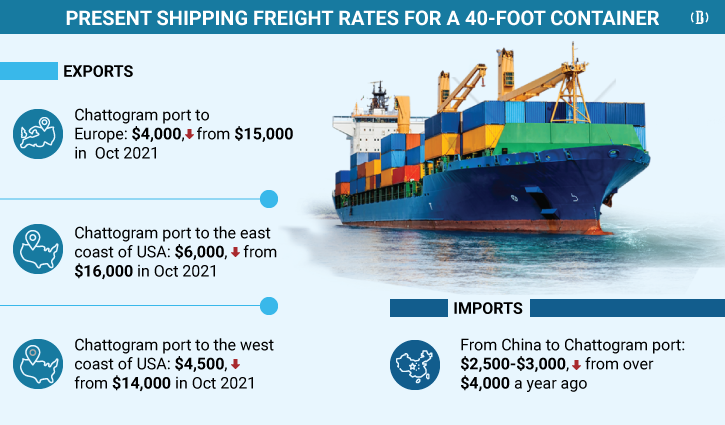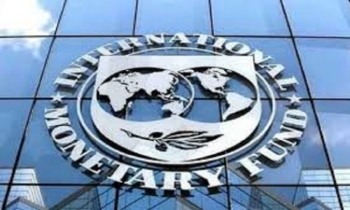Shipping freight rates dropping rapidly
BI Report || BusinessInsider

Business Insider Bangladesh illustrations
Shipping freight rates that reached record levels in 2021 due to the container shortage amid the Covid-19 pandemic and global supply chain disruption came down almost to the pre-Covid level a year later.
Importers who were struggling to manage the skyrocketing freight costs as they had to pay the prices are supposed to breathe a sigh of relief. But that was not the case as they are facing a slump in demand and consumption due to the soaring inflationary pressure, businesses said.
“We cannot take the advantage of declining freight costs because of a significant down in demand globally,” said Md. Sazzadul Hassan, chairman, and managing director at BASF Bangladesh Limited.
Now ships wait at different ports for containers, just the opposite situation the shipping industry faced last year.
“We see the demand for shipments has gone more than half of last year,” said a senior executive of one of the top three shipping lines operating in the country.
As a result, container rates are now dropping rapidly, he said.
According to industry insiders, the rate on the Chattogram port to Europe for a 40ft container came down to $4,000 from $15,000 in October 2021, while it costs $6,000 from Chattogram port to the east coast of the USA, down from $16,000 a year ago.
On the other hand, the rate on the Shanghai to Chattogram route to ship a 40ft container now stands at $2,500-$3,000, down from over $4,000 in 2021. Bangladesh imported over 23 percent of its total imports in fiscal 2021-22, so the freight costs between the countries matters for households and industries.
After two years of record-high container rates with capacity constraints and mega-profits for shipping companies, the container shipping market has changed dramatically, according to Drewry’s World Container Index (WCI).
The Shanghai to Rotterdam route rate came in at $3,688, down from $15,000 last year.
The British research firm Transport Intelligence (TI) says the market is cooling from the ‘overheating’ caused by Covid-19. The TI agency expects rates to return to pre-pandemic levels by 2023. Until then, the agency expects the rate will continue to decline more gradually.
Decreasing container demand
According to TI, the declining consumer confidence due to the war in Ukraine and its consequences, such as the energy crisis, and inflation are causing a declining demand for goods. On top of that, about 3 crore Chinese still had to deal with some form of lockdown last July. As a result, there is probably less production and therefore less supply, says TI.
























